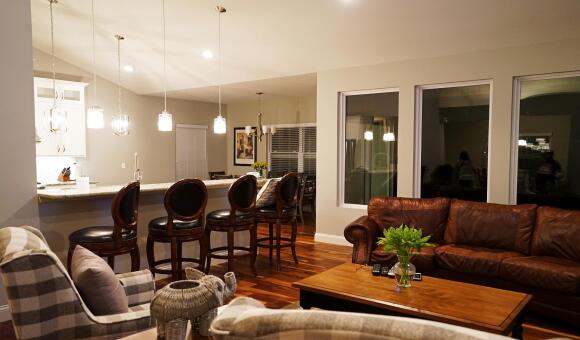What Are the Key Differences Between Solar and Wired Outdoor Lighting Systems?
When choosing outdoor lighting for your home or commercial space, two major options dominate the market: solar and wired systems. Both offer unique benefits and drawbacks, depending on your needs, budget, and preferences. Whether you're lighting a garden path, securing a parking lot, or illuminating a patio, understanding the fundamental differences between solar and wired lighting systems can guide you to the best decision. Choosing the right option can make a big difference in energy efficiency, aesthetics, and functionality.
This guide outlines everything you need to know about solar and wired outdoor lighting systems, so you can make an informed decision about your outdoor lights setup.
Understanding Outdoor Lighting Systems
Before diving into the comparison, let’s understand what each system entails.
What Are Solar Outdoor Lighting Systems?
Solar outdoor lighting systems rely on photovoltaic panels to collect sunlight and convert it into electricity. The energy is stored in rechargeable batteries and used to power LED lights during the night. These lights often operate independently and are easy to install.
What Are Wired Outdoor Lighting Systems?
Wired outdoor lighting systems are connected to your home or building’s electrical grid. They often require a more complex installation process involving underground wiring and professional setup. These systems are commonly used in areas where consistent, high-output lighting is essential.
Installation Complexity
Solar Lighting: Simplicity at Its Best
One of the biggest advantages of solar lighting is how easy it is to install. Most units are wireless, which means there’s no need for trenching or complicated electrical work. This is especially beneficial for homeowners who want to set up lighting solutions in remote or off-grid areas where connecting to power is difficult.
Solar lights are usually ready to go right out of the box. You can place them wherever there’s sufficient sunlight during the day. For temporary events or seasonal decor, solar options offer unmatched flexibility.
Wired Lighting: Professional Involvement Required
Wired lighting typically requires a certified electrician for installation. It involves running electrical cables through the ground or along walls, depending on your layout. Permits may also be required, depending on local building codes.
This level of installation ensures reliability but comes with a higher upfront cost and a more time-consuming setup process. However, for permanent fixtures with long-term use, this complexity often pays off in performance and durability.
Cost Differences
Upfront Investment
Solar lighting generally has a lower upfront cost, especially since it avoids installation and wiring fees. However, higher-end solar lights with better performance and aesthetics can be pricey.
Wired lighting comes with added expenses, including labor, materials, and potentially permits. The fixtures themselves may cost more depending on features such as motion sensors or smart technology.
Long-Term Costs
In the long run, solar lighting systems are often more cost-effective because they rely on free energy from the sun. There are no electricity bills associated with them, and modern LED solar lights are quite energy-efficient.
Wired systems will increase your energy bills, especially if they run throughout the night. However, if connected to energy-efficient LEDs and smart timers, they can be managed more efficiently.
Energy Efficiency and Environmental Impact
Solar Lights: Sustainable and Eco-Friendly
Solar outdoor lights are powered by renewable energy. They do not draw electricity from the grid, making them highly sustainable. For those concerned about environmental impact, solar lights are a smart choice.
Because solar lighting uses LED bulbs, energy consumption is minimal. Solar lights also reduce your carbon footprint and dependence on fossil fuels. This aligns well with the global push for greener lighting solutions Qatar.
Wired Lights: Reliable but Less Green
Wired lights can be energy-efficient if you use LED technology and automation. However, they rely on grid electricity, which often comes from non-renewable sources. This makes them less eco-friendly unless you pair them with green energy plans or solar-powered generators.
Performance and Brightness
Solar Lights: Moderate Brightness
Modern solar lights have come a long way in terms of brightness. However, they still struggle to match the intensity of wired lighting, especially in overcast climates or during winter months. Brightness often depends on battery storage and panel efficiency.
Solar lights work well for accent lighting, garden pathways, or soft landscape features. They may not be suitable for large-scale area illumination or security lighting where high lumen output is required.
Wired Lights: Superior Output
Wired systems offer consistent and powerful lighting regardless of weather conditions. They're excellent for high-traffic areas, large backyards, commercial properties, or security-sensitive spaces.
With wired lighting, you have more control over intensity, timing, and color temperature. Whether you're lighting up a driveway or a sports court, wired systems deliver consistent and high-performance results.
Maintenance Requirements
Solar Lights: Low Maintenance, But Not Maintenance-Free
Solar lights require minimal upkeep. Periodically, you’ll need to clean the solar panels to remove dust, leaves, or snow. The batteries typically last 1–3 years, depending on quality and usage, and may need to be replaced.
If a solar light stops working, the issue could stem from the panel, battery, or circuit. Most homeowners can handle minor troubleshooting themselves, which keeps ongoing costs low.
Wired Lights: Longer Lifespan with Consistent Maintenance
Wired lights, especially those using LED bulbs, can last many years. However, they require consistent monitoring to ensure cables remain intact and moisture hasn’t affected the system.
Professional maintenance may be needed, particularly in areas with frequent rain, flooding, or pest interference. Overall, wired systems tend to have a longer operational life if properly maintained.
Placement and Flexibility
Solar Lights: Unlimited Placement (with Sunlight)
You can place solar lights almost anywhere outdoors, as long as the location receives enough direct sunlight during the day. This makes them ideal for remote gardens, campsites, or trails.
They can be easily moved or rearranged without hassle, allowing seasonal or event-specific setups.
Wired Lights: Fixed and Structured
Wired systems are generally fixed in place and not easily moved once installed. This makes them less ideal for temporary lighting but perfect for permanent architectural or landscape lighting.
Wired lights also offer more options in terms of light design, such as floodlights, spotlights, and decorative fixtures that need stable electrical input.
Weather Resilience
Solar Lights: Vulnerable to Low Sunlight
In regions with long winters or frequent cloudy days, solar lights may not perform well. They rely on full sun to charge effectively, and without it, their output can be weak or intermittent.
Some newer models come with high-capacity batteries or larger panels to compensate, but performance still varies with climate.
Wired Lights: All-Weather Dependability
Wired lighting is more consistent across all seasons. Rain, snow, or cloud cover won’t impact performance since they draw power directly from the grid. This makes them a better option in harsh or unpredictable climates.
Safety Considerations
Solar Lights: Safer, Especially for DIY Users
Since they don’t require high voltage or digging, solar lights pose minimal risk during installation. There's no chance of electrocution or cutting through buried cables.
They're a popular choice for families with children and pets due to their safety and ease of installation.
Wired Lights: Requires Safety Precautions
Wired systems require careful installation to avoid electrical hazards. All connections must be properly grounded, and waterproof casing should be used for outdoor use.
Electrical failures or damaged cables can present a risk, especially in wet conditions.
Aesthetic Differences
Solar Lights: Sleek and Unobtrusive
Solar fixtures tend to be small, modern, and minimal in design. They are ideal for blending into a natural setting or for adding subtle highlights to landscape features.
While some may lack the grandeur of more elaborate fixtures, they make up for it in charm and ease of placement.
Wired Lights: Bold and Customizable
Wired systems offer more choices when it comes to size, design, and lighting effects. Whether you prefer dramatic floodlights or vintage lantern-style posts, wired lighting can create a customized ambiance.
For upscale gardens, outdoor kitchens, or commercial zones, wired options offer more control over visual aesthetics.
Final Thought
Both solar and wired outdoor lighting systems serve distinct purposes. If you want flexibility, energy savings, and a quick setup, solar lighting is an excellent choice. It's perfect for accent lighting, paths, or areas without easy access to electricity. On the other hand, if you need strong, reliable illumination with high brightness and advanced controls, wired systems are ideal, particularly for larger or commercial spaces.
Understanding your priorities — whether it's cost, convenience, sustainability, or performance — will help you determine which lighting system suits your space best. Whether you're creating an inviting garden ambiance or securing a commercial property, selecting the right type of outdoor lights is key to achieving your vision.









 UnlockWare Group
UnlockWare Group
Comments (0)